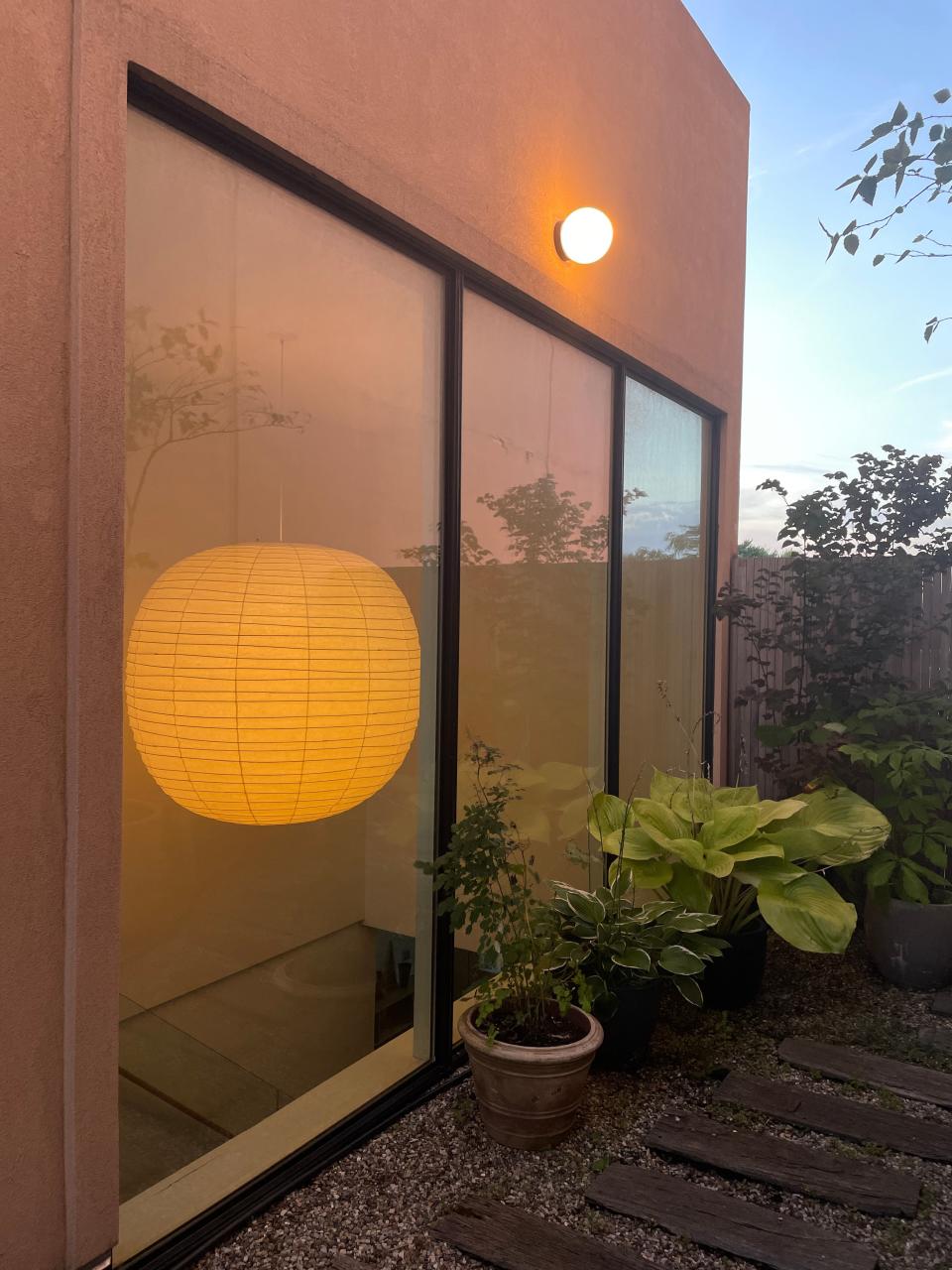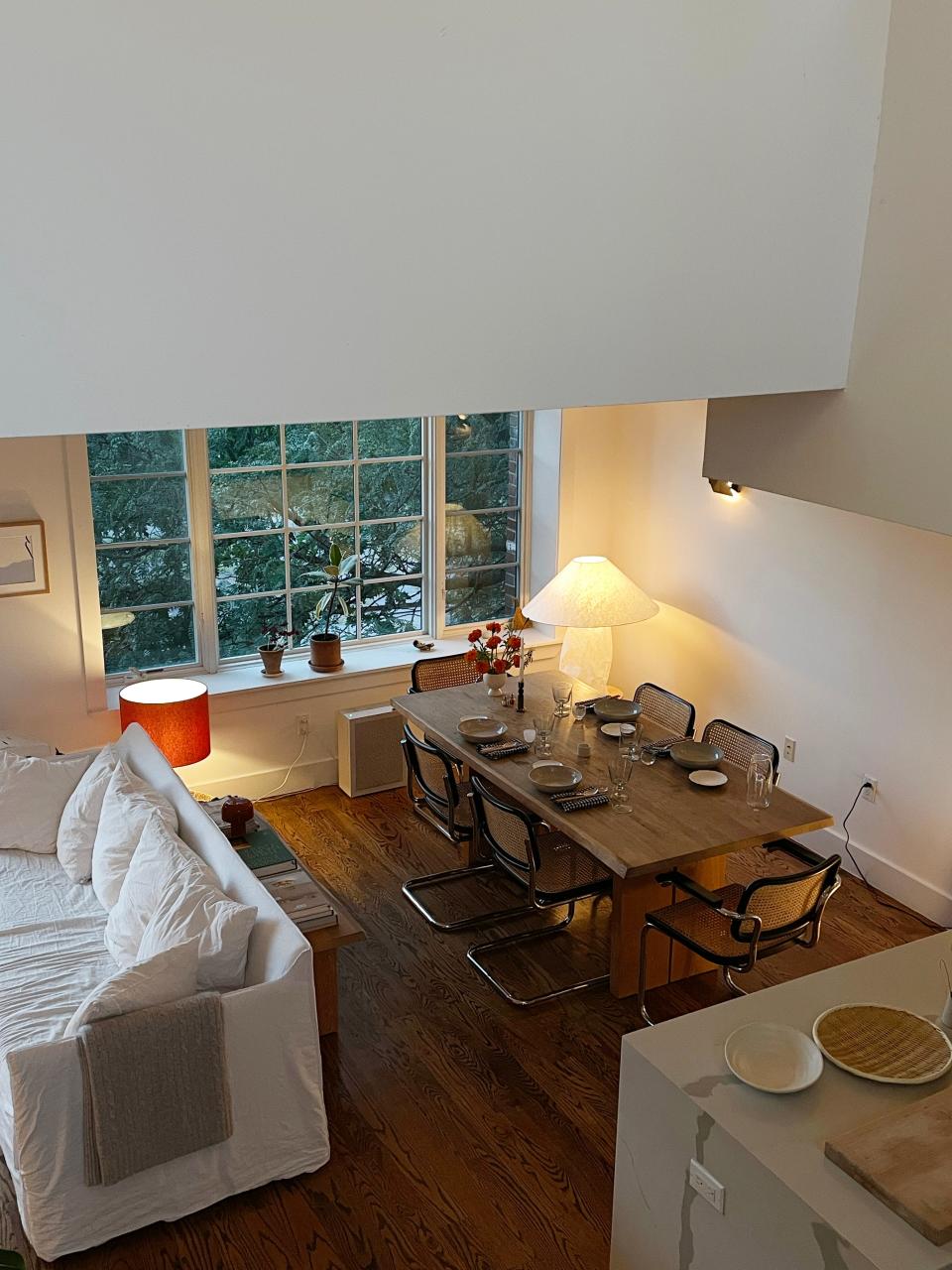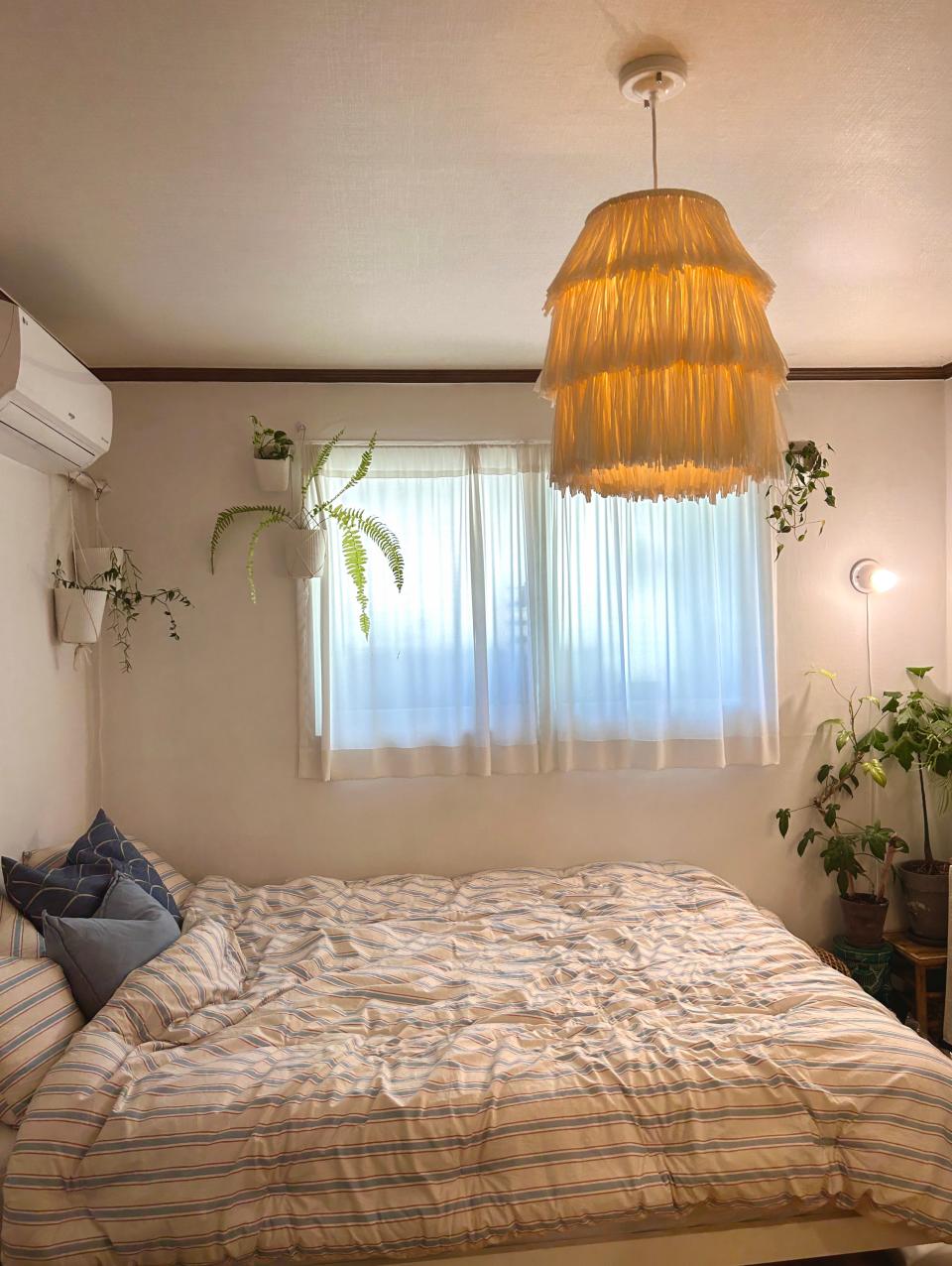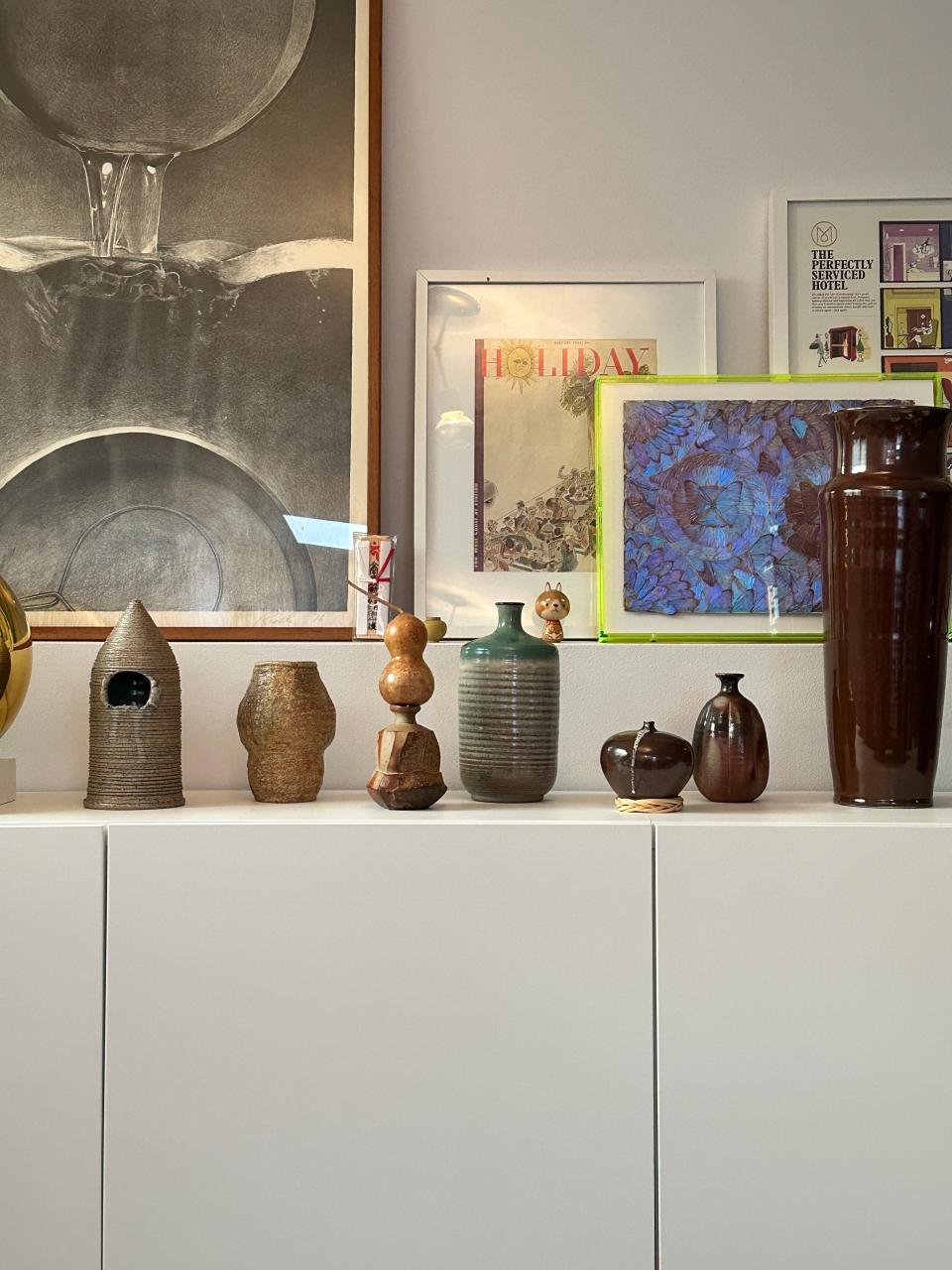In Asian American Households, Family Influences Every Design Decision

Photo: Nils Timm
What exactly is the Asian American experience? It’s as complex as it is rooted in the traditions of family. “It’s my mom’s platters of cut fruit and the batches of soup. It’s the ‘Are you comfortable? Do you have enough food?’ that will always be what home means to me,” says AD100 designer Young Huh.
To Huh, who immigrated from South Korea with her parents when she was three, and so many other Asian American Pacific Islanders (AAPI), home is far more than a place to live—it’s a sanctuary that tangibly embodies the foundational role that family plays in Asian culture. These manifestations could take the form of a windowsill blooming with remedial herbs the Western tongue might have difficulty pronouncing, or sharing a bunk bed with the grandma who raised you while your parent worked late. It could be sweltering summers in your parents’ home country, where you inevitably relearn their language through weeks of homemade dishes cooked by many cousins. It could be the eye-watering realization that, while you might not have seen them in a decade or even remember their names, your family would open their door to you in a heartbeat and have a warm meal, a spare mattress, and a set of household rules waiting for you before you’re even settled. It’s the way familial sacrifice and filial obligations inform every detail in the space between your walls.

In Asian cultures, family rules and values are rooted in collectivism. This is the learned nuance that individuals must respect the status quo around them as a way to prioritize their larger community’s needs before their own. “Unlike Western belief—which is that people should behave consistently true to themselves across all contexts, no matter where you are and who you encounter—Asians emphasize behaving in accordance with their context,” says Qi Wang, a human development professor at Cornell University and author of The Autobiographical Self in Time and Culture.

Wang points out several Asian customs that are a threshold into the home, making it a sacred space for the family. Wang emphasizes that “taking off one’s shoes is not just for hygiene, it also sets a transitional boundary between the outside and inside.” She also observes how having walls or tall fences surrounding the home is common in traditional Asian households for the same reason. “I have Asian American friends who just purchased a beautiful lake house. While Westerners would cherish that view, they built a wall outside their window,” Wang jokes. “In a way, it enforces the family’s expectations within the space and reminds people that their role changes when they enter home—you’re a wife, you’re a mother, you’re a sister, and so forth.” These tangible barriers between the outside and inside place additional emphasis on the importance of fulfilling your duties in your family’s household.
Multigenerational living

Assigned family roles heavily influence living customs in Asian culture, where individuals are expected to prioritize their responsibilities to their families. Huh, who spent summers back in Korea after immigrating to the States, recalls the disparate living customs she observed in Asia. “We would stay at either grandparents’ house with their kids and in-laws, because grandparents are very involved in the caretaking of their grandchildren. Multigenerational living is the norm,” she says. Huh notes that these expectations around filial obligation, marriage, age hierarchy, and gender roles also perpetuate the deeply entrenched division of labor in traditional Asian households. “On my paternal grandparents’ side, my uncle was the only son, so he was expected to stay at his parents’ home as they aged. His wife—who had moved in with her husband and in-laws—was expected to take care of her husband’s parents.” In contemporary Asian American households, gendered practice is no longer a priority, but taking care of elders remains a central pillar of the household.
Huh, who now lives with her husband and children in New York City, shares that she specifically designed the guest bedroom in her second home to welcome her parents. “It’s on the first floor, right beside the kitchen, so it’s able to accommodate my parents’ needs.”
Fernando Kabigting, founder of FDK Florals—whose clients include Gucci, Google, Herman Miller, and the Whitney Museum—notes that the ubiquity of multigenerational living in Asian culture is deeply intertwined with familial sacrifice in AAPI immigrant households. “When I immigrated from the Philippines with my five siblings and parents, we stayed at my aunt’s home. From there, we stayed with my dad’s family, and then we rented a home where we all shared beds and sofas before finally buying a house,” he recalls. “My parents were going to school full-time and worked several jobs in order to buy a house. My three eldest siblings also sacrificed so much of their lives to raise the younger three.”
Food as a love language
Both Huh and Kabigting credit their family values for their innate sense of hospitality. It is this shared history that continues to play an active role in the design of their clients’ homes, as well as their own. “I have 54 cousins and someone is always visiting from South Korea or wherever they live in the world—staying at a hotel is unheard of because my home is meant to be a space to welcome them,” Huh says. “I’m always ready to host, I think that’s why I fell in love with hospitality design.”
Kabigting adds that “regardless of what home I’m in, my priority is always to have a six-seater dining table. I always try to double the number of people around the table, so I can host my larger community for dinner parties.”
Bomi Jin, founder of the home goods store Bomi in NYC, agrees that dining is central to her understanding of home. When her family immigrated from South Korea to Michigan when she was 16, they couldn’t live without a kimchi fridge. (To this day, this is the most essential item in her home along with a rice cooker.) “ It’s big and took up a lot of space we didn’t have, but that just goes to show how important it was,” she explains. “The kitchen and dining room were always the most important part of our home, the space where we gather, do work, and chat over food, regardless of the time of day.” Even in her SoHo boutique, the dining piece is central and everything else is displayed around it, as that will always be the hearth of her home.
Family artifacts that pay homage to family traditions

Steffany Tran, founder of Vy Voi Studio, pays tribute to her family by upholding a designated altar to honor her ancestors. “In my home in Vietnam, there was a top floor altar where I had photos of family and would give my offerings,” she says. “It’s something that really stuck with me, so in my New York apartment I have a small altar in my living room with fruit I leave out for my ancestors before eating it myself.” She also honors her family’s immigrant experience by creating space for a home garden, where she plants herbs that her family couldn’t find in grocery stores and grew themselves upon first immigrating.
Eunji Jun, cofounder of Seoul-based firm Wknd Lab, seeks to celebrate her ancestors’ interiors in a contemporary context. “From a young age, I always wanted other people to see and appreciate the beauty of my grandparents’ furniture,” she says. “One of my favorite pieces is a table embedded with mother of pearl, which takes so much time and thought to create. I wanted everyone to appreciate the beauty of pieces such as this.”

Similarly, Kabigting honors family by filling his space with cultural artifacts from home and emulating family practices in his designs. “I try to use as many natural materials as possible. For example, I use rice paste for glue to create traditional Filipino paper lanterns. In my floral arrangements, I incorporate scents I grew up with that form my core memories of my home,” he says.
There are certain words in other languages that have infinitely more connotations and dimensions than they do in English, home being one of them. In Asian cultures, home embodies the complex set of expectations and sacrifices made within a family, the way being a child or a parent takes precedence over any other role in your life. It stays in your blood, permeating all aspects and experiences under your roof, even after designating the space as your own. “At the end, everything in our home goes back to the same question: What does love look like?” Kabigting says. “Whether it’s filling our home with artifacts from our native countries, cooking the foods we grew up with, or always opening our space up to family and friends, this is what our families have taught us our home should always look like. Which is to say, our home should always look like love.”
Originally Appeared on Architectural Digest

